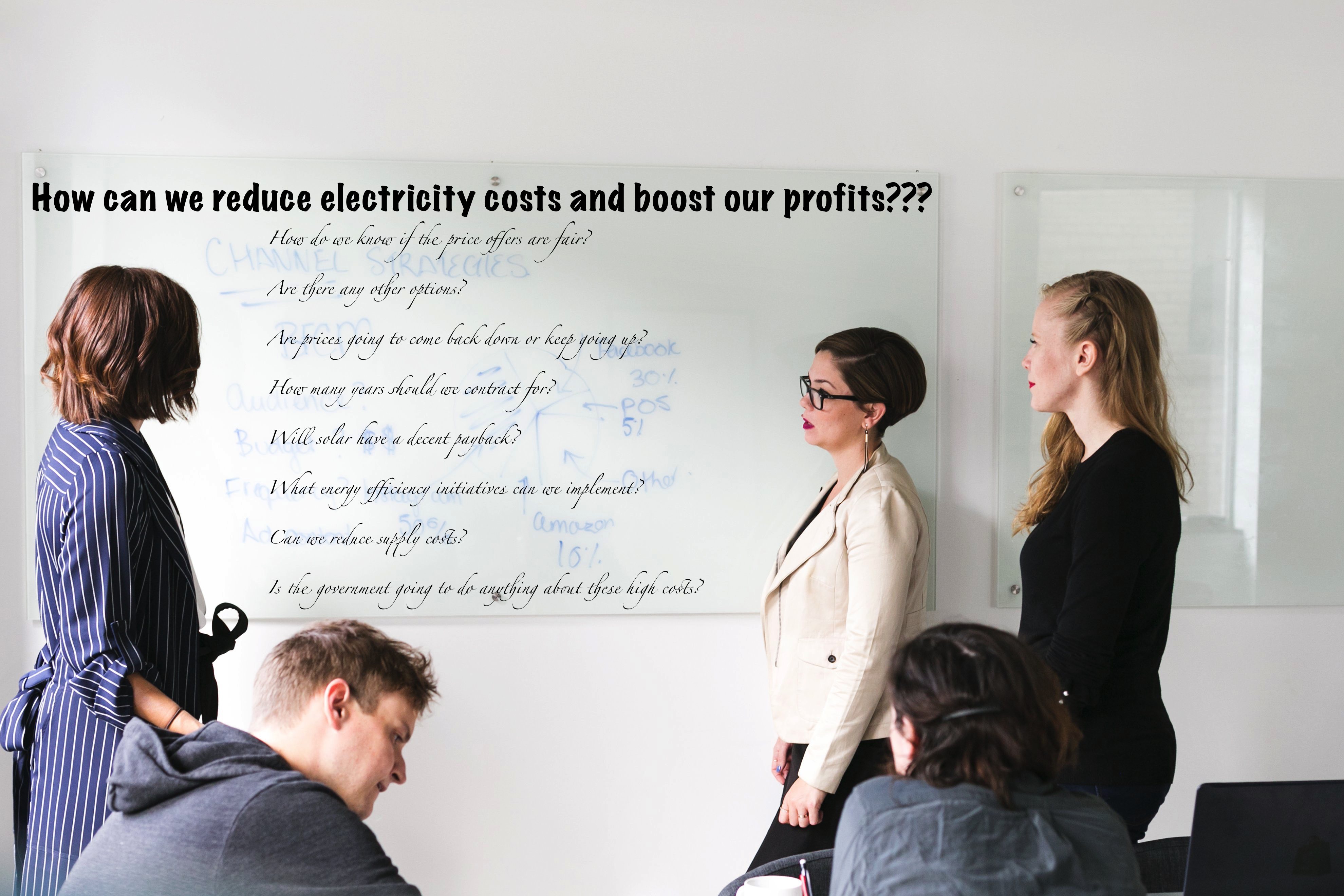
Many businesses have the mistaken belief that their only opportunity to reduce electricity costs is when their contract runs out and they run a competitive process for a new contract.
In reality, that competitive process is usually between a small number of traditional retailers who are basing their pricing on the same wholesale market and derivative market prices.
The real opportunity to achieve deep cost savings sits outside of this process and can be achieved at any time irrespective of the contract.
The key to reducing electricity costs is to reduce how much electricity you use and how much you pay for network charges. Electricity prices have been increasing over the last few years but by using less electricity and reducing network charges you can offset the price increases.
Reducing electricity consumption
An energy audit can help you identify opportunities to find significant efficiencies and reduce consumption for the same level of business output. Much of our plant and equipment was built decades ago or, if it is new, plant and equipment selection was often based on initial capital cost with little consideration to lifecycle electricity consumption. There are often great opportunities to upgrade equipment to more modern, energy efficient equipment to reduce electricity consumption. These often have great rates of return and if you are lucky enough to live in a progressive local council area you can access long term, low-cost finance through building upgrade finance. This will unlock an immediate cash flow benefit for your business.
Undersized or oversized motors will lead to inefficiencies, older motors may be of a low-efficiency rating and can be upgraded, variable speed drives will reduce electricity consumption compared with fans where the flow is controlled by dampers or pumps where the flow is controlled by recirculation valves. All of this equipment can be upgraded leading to a reduction in electricity consumption.
Another major cause of unnecessarily increased electricity consumption is deterioration in the condition of equipment due to age or lack of maintenance. Compressed air leaks, the poor condition of many HVAC units and chillers, cooling towers etc lead to significant inefficiencies. Many of these can be rectified at little or no cost.
Poor initial control system design or later modifications to the main process or supporting utility services without sufficiently modifying the control system lead to significant inefficiencies. These can be quite easily rectified once they are identified. The key is to recognise that there is a control system issue.
A common cause of inefficiency is continuing to run equipment unloaded or under-loaded. Control systems can be introduced to shut down equipment that is not required at that point in time and start it up again when required. Compressed air control and HVAC control are often leading to inefficiencies.
A popular method of effectively reducing electricity consumption is by installing behind-the-meter solar generation. These projects usually have great returns and “simple” paybacks of around 5-years, some even better than that. Often solar projects that give a great return don’t go ahead due to competition with other capital projects, a restricted capital budget or because the business does not own the building. In each of the cases, building upgrade finance can be used to provide long-term, low-cost finance to implement a solar project.
Implementing solar generation can also provide environmental certificates (either small-scale or large-scale) that you can use to offset your environmental charges that are part of your bill. It can also help in reducing network charges.
Reducing network charges
An often overlooked opportunity to reduce electricity costs is to reduce network charges. These are often considered as fixed supply charges and for some businesses, they can constitute close to 50% of the bill.
Network charges consist of a demand component in kVA, a consumption component in kWh and a fixed supply component. Any of the actions taken to reduce electricity consumption in the section above, including solar, will deliver savings to network charges as well. However, it is also possible to reduce the demand component significantly.
The site demand, measured in kVA, is the amount of load that the network sees your site using. However, the aggregate power to drive your site is measured in kW. The ratio of kW to kVA is called power factor which I have explained in more detail in this article.
If your power factor is 0.80 then you are paying 25% more for the demand component of your bill than a power factor close to 1.0. Many sites have power factors as poor as 0.80 or below. Power factor correction can increase your site’s power factor much closer to 1.0 and reduce demand charges.
By analysing your load profile by time-of-day, day-of-week and even month-of-year you can identify patterns in maximum demand that drive those costs. By identifying those patterns, and eliminating or shifting these higher demand peaks you can reduce your demand charges. Simple actions like not starting all equipment at once, shifting some equipment operation time to outside the maximum demand determination window or even modifying or installing replacement equipment to reduce load can reduce demand charges.
Electricity costs can be reduced at any time irrespective of the electricity supply contract cycle. By reducing electricity consumption and by reducing network charges you can offset the increase in electricity unit prices.
If you would like to know more detail about electricity cost reduction then you can check out my book Power Profits – A Comprehensive 9-Step Framework to Reduce Electricity Costs and Boost Profits.
